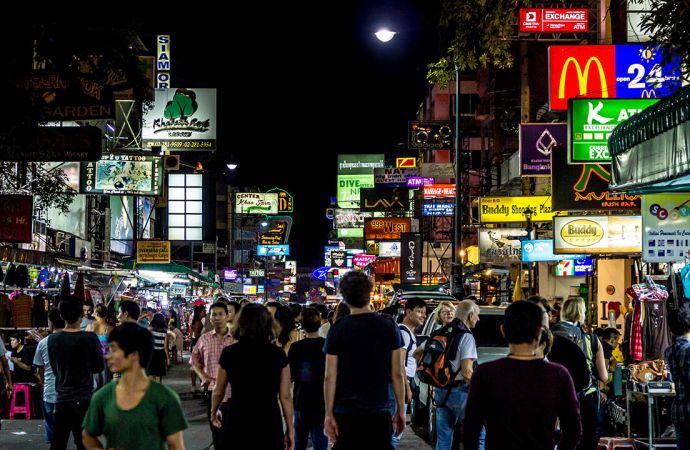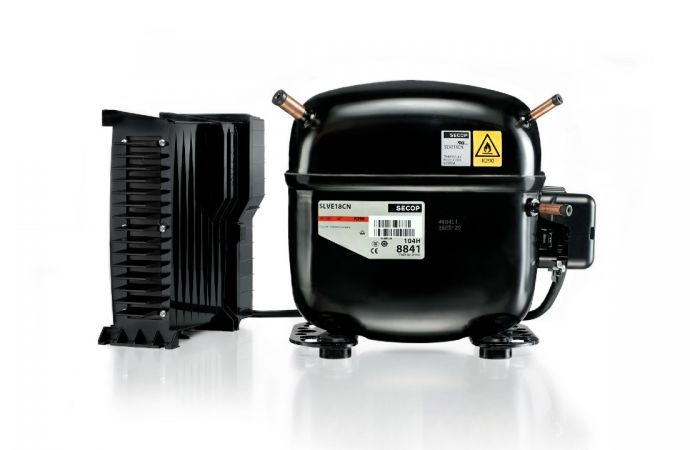With plans to convert its entire portfolio to hydrocarbons and CO2 by 2022, OEM Sanden Intercool Group is targeting its home market in Thailand and the region.

Bangkok, Khao San Road, © Andreas Metz / 123RF.com
Thailand-based Sanden Intercool Group, a Thai-Japanese joint venture company and one of the largest global manufacturers of commercial and professional refrigeration equipment, aims to have its entire product range using natural refrigerants, in particular hydrocarbons and CO2, by 2022.
The goal stems from both growing environmental concerns and customer demands, particularly for hydrocarbons in Southeast Asia, as well as technical and regulatory advancements.
“Most of our global and regional accounts — meaning beverage, beer, soft drink, dairy and ice cream makers — are actively supporting green refrigeration, either by mandating low-carbon-footprint equipment or by advising the use of hydrocarbon refrigerants,” said Alex Panas, commercial director for Sanden Intercool Group.
Indeed, over the past few years, major multinational brands in these product categories – many of which are customers of Sanden – have made specific commitments to phasing down the use of HFCs in their equipment.
For example, Dutch-British transnational consumer goods giant Unilever decided to end use of f-gases and adopt hydrocarbons in its freezer cabinets in 1999. Atlanta, Ga.-based Coca-Cola, the world’s largest beverage company and investor in plug-in cooling equipment, has aimed since 2008 to make all new cold-drink equipment HFC-free by 2020.

Dutch multinational brewing giant Heineken is a major driver of hydrocarbon equipment, adopting it for all beer fridges since 2013, while Swiss multinational Nestlé committed to using hydrocarbons in “all new ice cream chest freezers” in 2015.
PepsiCo, the food and beverage multinational giant, AB InBev, the world’s largest brewer and Carlsberg Group, the Danish iconic beer company, are now actively supporting the migration of their cooling equipment to hydrocarbon, in developing markets, as well as established ones. And Diageo and Group Castel are both investing in green refrigeration for all of their equipment in Africa.
“I think that these are the opinion leaders that will drive further this change in the industry,” said Panas.
- Status: Joint venture between Yammarat Refrigeration Group (Thailand, privately held) and Sanden Corporation (Japan, public, Tokyo Stock Exchange)
- Founded: In 1990, with headquarters in Singburi, Thailand
- Manufacturing capacity: 500,000 units per year
- Manufacturing facilities: Thailand (mega plant), Egypt, Nigeria
- Markets: East Asia, Pacific, Africa, Middle East, Europe and North America
- Product range: Beverage coolers, ice cream freezers, retail shop coolers and freezers, convenience store and supermarket display cases, professional kitchen and food service equipment, pastry shop showcases
Production Line Conversion
Already more than 70% of the company’s equipment sales is available with hydrocarbon systems, said Panas, adding that nearly 100% of the company’s sales to Europe and Africa have been hydrocarbon equipment in the last few years.
Getting to this point, however, required a significant investment in the development of green refrigerant product configurations as well as in the conversion of the company’s production lines to be compatible with them. This change has been supported by German International Cooperation Agency GIZ (Gesellschaft für Internationale Zusamenarbeit) in Thailand. The process began around three years ago and will be completed this August.

“GIZ Thailand is supporting all the phases for the migration to green refrigerant in the country,” said Panas. This includes the necessary investments for the production of hydrocarbon-based equipment through cooperation with manufacturers, as well as regulatory and marketing activities required to establish and promote this new equipment to the customer base.”
The recent hydrocarbon charge limit increase to 500 g (17.6 oz) from 150 g (5.3 oz) approved by the International Electrotechnical Commission (IEC) “will help reduce technological barriers and facilitate wider use of hydrocarbons across more types of commercial and professional refrigeration equipment,” he said.
That means that, in addition to small-to-medium beverage coolers and chest and ice-cream freezers, hydrocarbon refrigerants “will be applicable to larger models as well as in retail display cases and kitchen/foodservice refrigeration equipment in the near future,” he said.
With that in mind, Sanden Group has devised “a concise three-year plan to develop a complete range of green commercial, professional and retail refrigeration equipment for the beverage, dairy, ice-cream, foodservice and retail store market segments,” he added. This is underway and expected to be completed by 2022.

Targeting Southeast Asia
With much of its global market already rapidly adopting hydrocarbons, Panas said that Sanden is now “setting its sights” on growing the utilization of hydrocarbon systems in its home market of Thailand and the rest of Southeast Asia.
“However, apart from offering the right cooling configurations and green refrigeration solutions, there are external factors and outside influences that impact the switch-over to natural refrigerants,” he noted.
For example, at the moment there is no clear target for the phase out of CFCs or HFCs in ASEAN (the Association of Southeast Asian Nations), “which creates the lack of strict direction for the industry in this region,” he said.
Another obvious factor is service, said Panas. “I think this is the main reason why some of the biggest companies in this region have not yet switched to hydrocarbons.”
Despite these challenges however, Panas said that the company is confident in its future vision and decisions, and working towards achieving its green refrigeration deployment goal.
As a message to others considering this transition in Southeast Asia he remarked, “We can together evolve the industry in the region and facilitate the switchover to green cooling; I urge them to join the effort.”
Related stories




